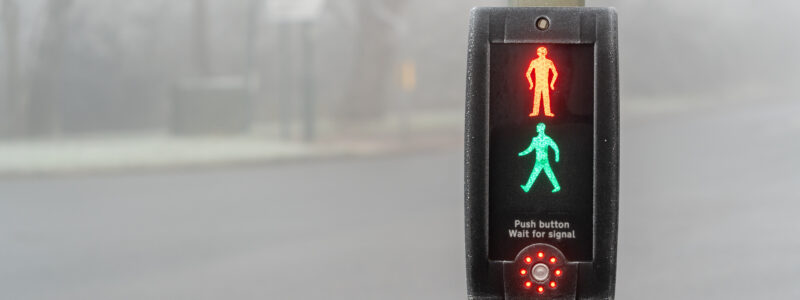Junctions, roundabouts and crossings (skills 14 to 16)

14. Junctions
There are many different types of junction. You should be able to negotiate any junction on any type of road safely, without holding up other traffic.
You should be able to deal safely and confidently with all types of junction, on all types of roads. This includes:
- T-junctions and Y-junctions
- crossroads
- slip roads
- unmarked junctions
You should know:
- mirrors – signal – manoeuvre (MSM) and position – speed – look (PSL) routines
- rules for turning at, entering into and emerging from a junction
- ways other road users turn right at crossroads
- the significance of advance warning signs and road markings, and acting correctly on what they see
- rules of priority, especially when dealing with unmarked junctions
- the importance of good observation
15. Roundabouts
You’ll need a thorough understanding of the rules that apply when approaching and going around a roundabout.
You should be able to safely negotiate different types of roundabout, including:
- standard roundabouts
- mini-roundabouts
- multiple and satellite roundabouts
- traffic-light-controlled roundabouts
You must know:
- how and when to apply the MSM and PSL routines
- the importance of effective observation and awareness of other traffic
- how to position the car correctly and which lane to use
- who has priority
- the procedure for leaving a roundabout
16. Pedestrian crossings
Be aware of the basic rules that apply to all pedestrian crossings. You need to know the differences between each type of crossing.
You should to be able to safely negotiate different types of crossing, including:
- crossings controlled by lights
- zebra crossings
- school crossing patrols
- split crossings
You must know:
- the importance of effective scanning as they approach a crossing
- how to recognise the different types of crossing
- how to apply the MSM and PSL routines
- the correct speed at which to approach the crossings
- the rules on overtaking
- the rules on parking near crossings
- when to stop for pedestrians who are waiting to cross
- the times and places where there’s likely to be high risk
- the effect that different weather conditions have on the ability to see and stop safely
Learn more about these skills
Previous page:
Next page:
Not feeling completely prepared?
Only take your driving test if you’re feeling completely prepared.
You can move your driving test back if you’re not feeling quite ready yet.
It’s free to change your appointment time, as long as you do it at least 3 full working days (Mondays to Saturdays) before your test.
